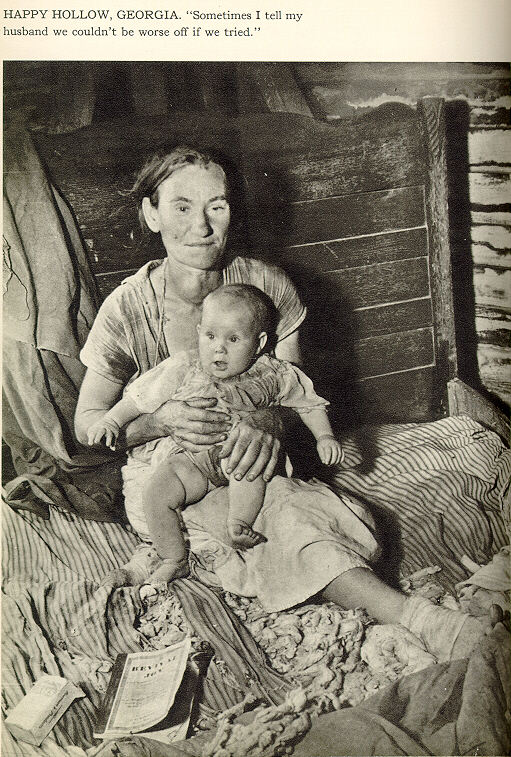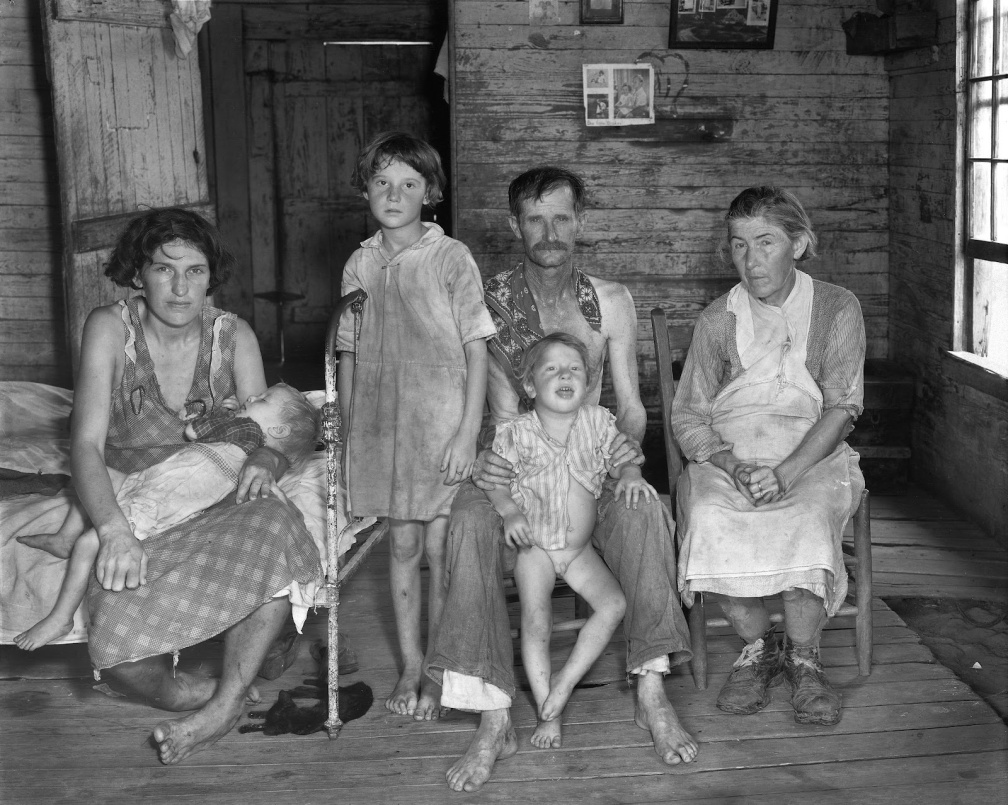The time period during and after World War One was one that came with lots of changes, one after another. The Great Depression, the advances in the medical world, and the introduction to modern day weapons. With so much going on in the world, the art world shifted in order to capture all that was going on and changing all around it.

This piece is a part of the “Little Money” series, by Dorothea Lange, shows several young men from Vermont around their automobile at their squatter camp in Nipomo, California. The men moved west – all the way from the East Coast – as a result of the Great Depression & Dust Bowl that was being experienced all over the country & in the Mid-West, respectively. They made their way to California in order to make their living as pea pickers. Their earnings after six weeks? $7.

“Sometimes I Tell My Husband We Couldn’t be Worse Off if we Tried,” by Margaret Bourke-White is another extraordinary Great Depression photographer. Unlike Lange, Bourke-White does not shy away from capturing the real rawness of the families making it through these troublesome times. Unlike Lange’s image, which is framed very nicely around the automobile and the young men sporting smiles on their faces, Bourke-White really captures the rough life that these families are enduring.
I especially enjoy this image because of it’s simplicity. You see an infant and it’s mother – typical baby, oblivious to it’s surroundings and happy as can be, though in the mother’s expression you can just see the exhaustion, the hours of hard work she’s likely been putting in day in and day out. And then within the “bedding” area you can see how dirty the linens are, and what appears to be torn wraps or linens spread throughout the vicinity.
The title of the photo, the rigid edges on this hardworking woman, the dated black and white texture of the image – they all add to the (very accurate) impression of hardiness and struggle. Bourke-White captured the essence of the struggle that people were experiencing during this time.

Walker Evans, like Margaret Bourke-White, was able to capture some really powerful, raw images. While I can’t find a title for this image, it seems that Evans was prone to leaving his photographs untitled.
Also like Bourke-White, Evans was not afraid to really capture the hardness his subjects displayed, or the hard times that they were living through. You can tell by their worn out clothes that they are getting last minute of wear and tear that they can muscle through, much like the family itself was likely working to do.
I think another aspect to the photos that Bourke-White & Evans captured is the sense of family. While you can tell that they are physically exhausted and making the most of what they do have, they stick together as a family.
While I likely would not have this photography style hung in my home, I absolutely think it would be appropriate and a benefit to any art gallery or museum dedicated to the Great Depression.
Works Cited
I really enjoyed your blog and the photos. While the first one with the car has a happy feeling to it the second two really drive home the desperation during the Great Depression. I think that is one thing photographic art can do it capture the essence of ones feeling in a way that paint on a canvas can’t. I think the photography during the great depression was so important because it was able to preserve the suffering and hardships that can’t be just described. Tho woman holding that super adorable happy baby pushes at your heart. You can see how rough life is, the inner strength of the mother as she holds her baby in her home. The home makes me so sad, especially when I noticed the wraps around her feet, it makes me wonder if she even has shoes. I have that same feeling with the last photo too. You wish you could help all those who need help. I think the hardest part of these photos is that these could even be photos of today, there are still so many who live like this in the world. Its really sad. I am glad that photography was able to preserve these moments so others can learn of the past to hopefully prevent it and help others in the future.
I love photography because you get one moment in people’s life to study them. Some moments happy, some sad, but it saves that moment for others to share. You can learn so much from these pictures about how life was for each individual person during the Great Depression, it gives it a face. While I love looking at photography I don’t think I would hang any of these in my home. It would be so heart wrenching to see it everyday.
LikeLike